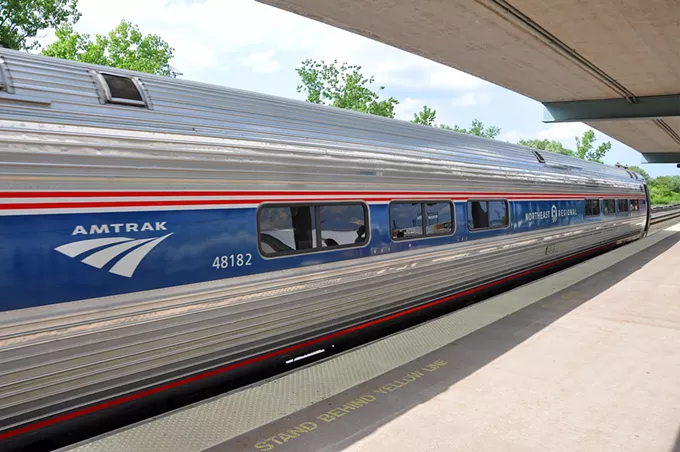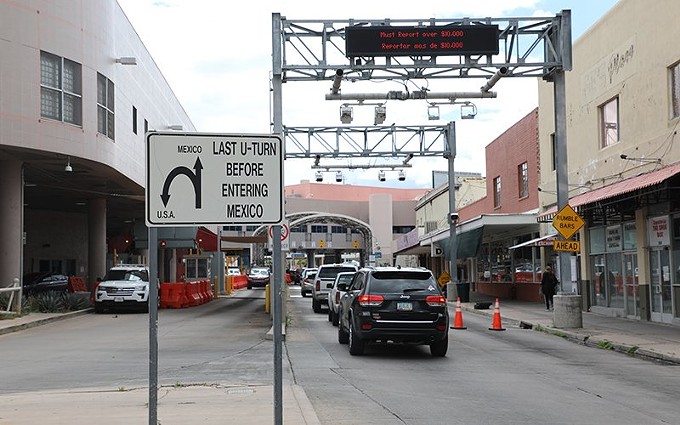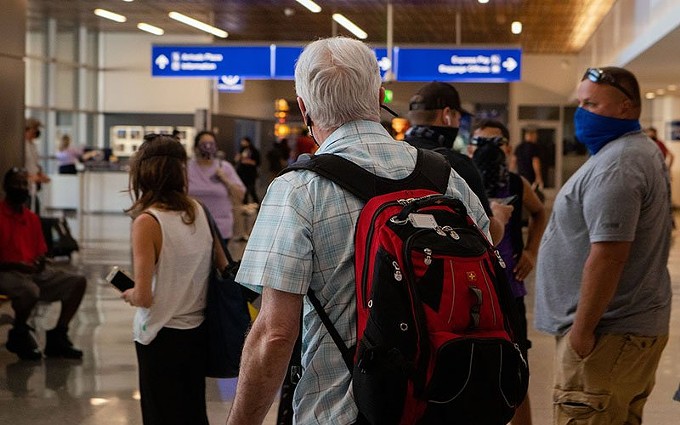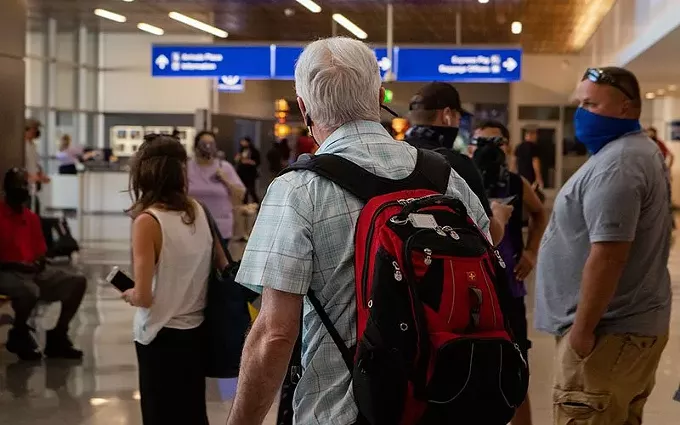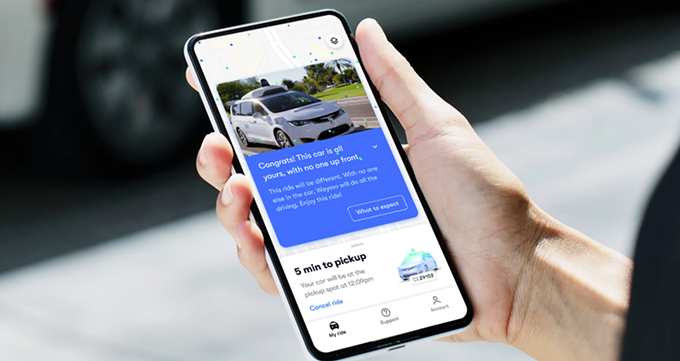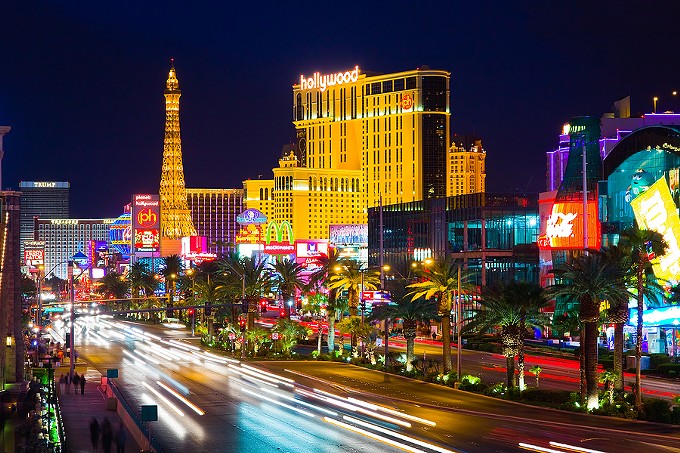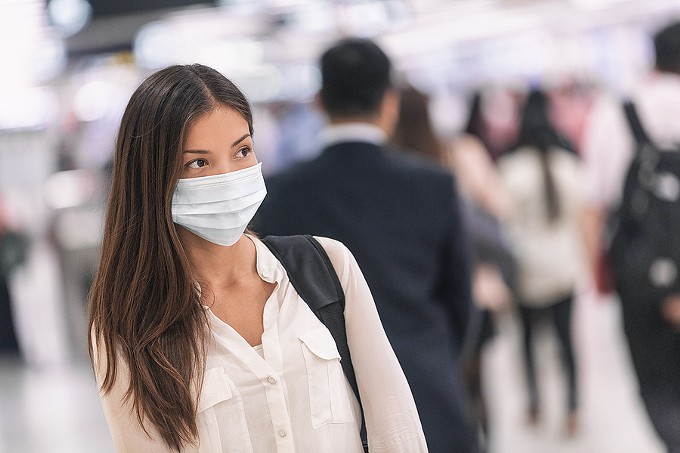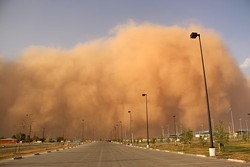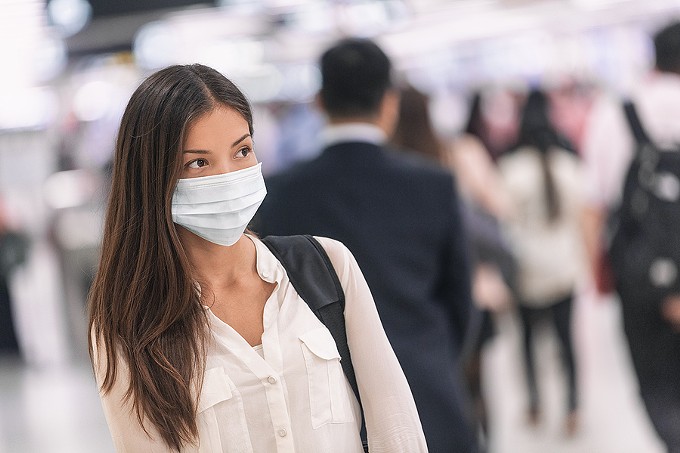Thursday, July 29, 2021
Mayors from 11 Arizona communities, including Tucson, Phoenix, Oro Valley and Marana, sent a letter to Arizona congressional leaders, supporting Amtrak’s proposal for a passenger rail connecting Tucson and Phoenix.
“It's about a regional approach to economic development because what's good for Tucson is good for the region,” said Romero in a media roundtable with Amtrak and city leaders on Tuesday. “It really is about offering an opportunity to all of our residents, including those that live south of Tucson in Nogales and Rio Rico, to connect even tourists that are coming in from Sonora, Mexico, which is our number one trading partner in Arizona, to Tucson.”
The passenger rail would be an alternative to driving, with a five-minute shorter travel time than the peak two-hours-and-30-minute commute from Tucson to Phoenix, said Amtrak President Stephen Gardner. The route would also link other towns, such as Marana, Coolidge and Goodyear.
The rail would offer three daily round trips between Tucson, Phoenix and Buckeye, and one daily trip from Tucson to Los Angeles. The proposed line is part of Amtrak’s Corridor Vision Plan to expand low carbon intercity passenger rail service to 160 communities across the nation over the next 15 years.
“We have a global climate crisis. In part congestions on the road and really in the air feed some of that. We have a history of some structural inequality in society but particularly in transportation as well,” said Amtrak CEO Bill Flynn. “We believe that one way to rise and address these challenges that our country confronts is through expanding intercity passenger rail service, putting in place a system that offers frequent reliable, sustainable and equitable alternatives to driving and flying.”
Flynn said the rail could address long-term congestion issues in the corridor, as Tucson commuters are estimated to spend about 90% more time in traffic than elsewhere and large city commuters may be experiencing as much as 62 hours of congestion delay, estimated to cost about $1,000 a year.
Friday, June 18, 2021
WASHINGTON – Border officials urged lawmakers to stick to a plan to reopen the border to nonessential travel Monday, even as they said more needs to be done to prepare for the expected surge in traffic.
The travel restriction was first imposed in March 2020 because of COVID-19 and has been regularly extended since, with the latest extension through 11:59 p.m. Monday. It was not clear if it will be extended again, but witnesses told a Senate Homeland Security subcommittee Wednesday that border communities cannot afford another delay in the reopening.
“I implore you to work with the White House in lifting border crossing restrictions for nonessential travel,” said Guillermo Valencia, who was testifying on behalf of the Greater Nogales and Santa Cruz County Port Authority.
“While these measures may have served an important role at critical times during the height of the pandemic, the continuation of these provisions are engendering the negative impacts on border economies,” he said.
Valencia testified that border crossings at Nogales are down by more than 46%, a drop that has “decimated” small businesses, restaurants, hotels and stores in the town.
But Valencia and others at the hearing also told senators on the Governmental Operations and Border Management Subcommittee that more workers and better technology will be needed at ports of entry to keep up with any increase in cross-border traffic once restrictions are lifted.
Anthony Reardon, president of the National Treasury Employees Union, said there is a staffing gap of more than 2,000 workers at Customs and Border Protection, which has seen no additional funding for hires since fiscal 2020. Even though border crossings fell during the pandemic, he said workers are stretched thin.
“If these essential travel restrictions are indeed lifted, I have heard from NTEU leaders that the current staffing at land ports will be unable to maintain inspection and processing functions to address the expected increase in traffic flow in a timely manner,” Reardon said.
Wednesday, June 16, 2021
PHOENIX – Phoenix Sky Harbor International Airport is filling up with more travelers this summer, with more than 4.8 million passengers boarding flights there in the past four months alone, according to a report published on the airport’s website.
Due to the low volume of travelers at the height of the pandemic, getting through security and the preboarding process was quick and easy. But today, the process is a bit more difficult, according to Patricia Mancha, a media Transportation Security Administration spokesperson.
“During the pandemic, if anyone traveled they saw no lines. It was a quick process. That’s not the case anymore,” Mancha said.
The COVID-19 pandemic hit American travelers hard in 2020 and early 2021. In addition to lockdowns and people’s health concerns over travel, government-issued bans on travel to countries such as Iran, China, the United Kingdom, Brazil, South Africa and most recently, India.
According to Sky Harbor officials, 2020 had a total of around 21 million travelers, compared to the more than 40 million who traveled through the airport in every other year in the decade.
Monday, April 26, 2021
WASHINGTON – With vaccination efforts in full force, airlines and airports are on their way to bouncing back from a year in which passenger traffic fell as much as 96% because of the pandemic, officials told a Senate panel Wednesday.
And that improvement has also been seen at Phoenix Sky Harbor International Airport, where “we were very, very excited to see numbers increase to about 70%” of pre-pandemic levels, said Charlene Reynolds, assistant aviation director of the Phoenix Department of Aviation.
“Here at Sky Harbor, we are currently seeing some revival of traffic,” Reynolds said in her testimony to the Senate Commerce subcommittee. “We looked at some of the projections from the rating agencies, they believe we will return to normalcy in 2024, however, we’re very hopeful that passengers will return sooner than 2024.”
While they talked about gains, however, much of the hearing was dedicated to the question of health concerns associated with increased travel, and the need to keep enforcing COVID-19 safeguards.
“I look forward to hearing from our witnesses about how safe it is to fly, and what the future holds for air travel,” said Sen. Roger Wicker, R-Miss., who said recent guidance from the Centers for Disease Control and Prevention does not provide the clarity “needed to maintain public confidence.”
Tuesday, November 24, 2020
WASHINGTON – Thanksgiving travel is expected to be down sharply this year because of COVID-19, but as many as 50 million Americans are still expected to travel this week despite pleas from health experts to stay home.
And those people who do travel could run into a bewildering array of restrictions when they reach their destinations, experts say.
“It is important to know the risks involved and ways to keep yourself and others safe,” the AAA said in its annual Thanksgiving travel outlook. “In addition to CDC (Centers for Disease Control and Prevention) guidance, travelers should also be aware of local and state travel restrictions, including testing requirements and quarantine orders.”
The AAA forecast predicts an overall decline of at least 10% in holiday travelers, from 55 million last year to just over 50 million this year.
But that’s still a lot of people and officials are making changes to accommodate safe travel in a time of COVID-19.
“We have encouraged our business partners to establish touchless applications where possible and we encourage travelers to use mobile boarding passes wherever possible,” said Greg Roybal, a spokesman for Phoenix Sky Harbor International Airport.
Sky Harbor announced a partnership Monday with XpresSpa Group Inc., a health and wellness company, that has set up a COVID-19 testing facility in a former urgent care clinic in Terminal 4. The six testing rooms should be able to handle more than 400 travelers per day.
Thursday, October 8, 2020
As of Monday, Oct. 8, tech company Waymo is publicly offering a self-driving car service in the Phoenix area. Waymo—formerly the Google self-driving car project—is opening up their fully driverless car service on their app, which allows Waymo One users to take friends and family along on their rides.
Waymo has already been facilitating driverless rides throughout 2020 to a select group under an NDA, but are now public with their plans to expand. At this time, only those who are already Waymo One users can hail rides, but in the coming weeks, they plan to add more people into the service through their app (available on Google Play and the App Store).
“It’s really remarkable to have the world’s first fully driverless ride hailing service, Waymo One, in Mesa and the East Valley,” said Mesa mayor John Giles. “As Mesa grows and evolves, this innovative technology is in alignment with our City’s future, and I’m excited that our residents will be among the first to take advantage of this one-of-a-kind service.”
After Waymo finishes adding in-vehicle barriers between the front row and the rear passenger cabin later this year, they'll also be re-introducing rides with a trained vehicle operator, which will add capacity and serve a larger geographical area.
For more information, visit waymo.com
Tuesday, August 18, 2020
When it comes to COVID-19, what happens in Vegas doesn’t stay in Vegas.
Las Vegas casinos reopened June 4, and they have become a likely hotbed for the spread of the novel coronavirus, public health experts said. But if tourists return home and then test positive for COVID-19, the limitations of contact tracing in the midst of a pandemic make it unlikely such an outbreak would be identified.
Contact tracing, one of the pillars of stopping the pandemic, is a labor-intensive process where a health official tracks down anyone who’s been in contact with an infected person and takes steps to prevent the disease’s spread. But there is no national system in place for contact tracing, said Joshua Michaud, an epidemiologist and associate director of global health policy for the Kaiser Family Foundation. It’s decentralized and performed by local health agencies that may not communicate with one another, especially given their caseloads. So, if a casino had a “cluster outbreak” or “superspreading event” among visitors, it’s unlikely contact tracing would catch it, Michaud said.
“The way it’s set up right now, contact tracers are not looking for clusters that might identify outbreaks tied to traveling to a casino or other specific locations,” Michaud said. “You’re not actively looking for it, so you might miss that event. Contact tracing is not set up to answer those questions, so you’ll still be in the dark.”
Monday, August 17, 2020
The Trump administration is predicting years of dramatically reduced international demand for U.S. visas, and planning for drastic budget cuts to visa services worldwide as a result, according to an internal memo seen by ProPublica.
The projections made by the U.S. State Department in a memo signed by Secretary of State Mike Pompeo on Monday contrast with the rosier outlook expressed repeatedly by President Donald Trump. As recently as Aug. 5, Trump predicted that the coronavirus “will go away” and that a vaccine will be available before the end of the year. But internally, the memo shows, the government is planning for the pandemic to drastically reduce international travel to the U.S. through at least 2022.
The memo projects steep reductions, in particular, to non-immigrant visas. Trump has issued restrictions on some categories of non-immigrant visas, citing the economic impacts of the pandemic, but the majority of non-immigrant visas processed by the State Department are temporary visas for business travel and tourism.
Wednesday, July 1, 2020
The roughly $6.5 million technology – the first of its kind in Arizona – uses 13 visibility detectors, a weather radar system, speed sensors and a small weather station, all of which are run through ADOT’s Traffic Operations Center in Phoenix.
Thursday, June 25, 2020
The quarantine, which took effect at midnight Wednesday, applied to nine states with positive virus test rates above 10% or 10 cases per 100,000 residents over a seven-day period. Arizona has been well beyond that threshold for the past three weeks, as the state has regularly set new records for daily infections.
New York Gov. Andrew Cuomo, New Jersey Gov. Phil Murphy and Connecticut Gov. Ned Lamont jointly announced the quarantine Wednesday on travelers from Arizona, Alabama, Arkansas, Florida, North Carolina, South Carolina, Washington, Utah and Texas.
Cuomo said the three Northeast states, which were hit hard by COVID-19 early in the pandemic, “worked very hard to get the viral transmission rate down” and they want to keep it that way.
“We don’t want to see it go up because a lot of people come into this region and they could literally bring the infection with them,” Cuomo said. “It wouldn’t be malicious or malevolent, but it would still be real.”
Murphy said imposing the quarantine is just “a smart thing to do” to protect their states.


